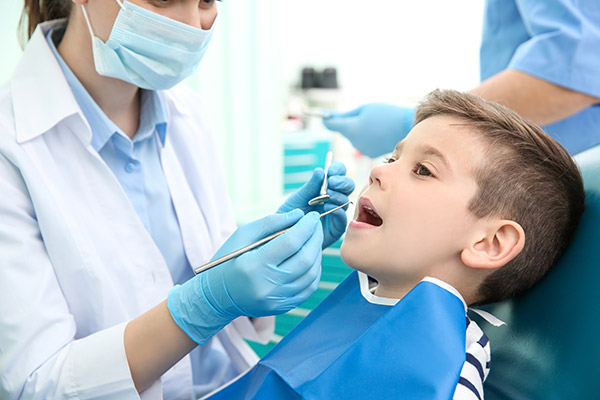Precision Pigmentation Laser Treatment for Clearer Skin

Having clear and radiant skin is a desire we all share, but sometimes, pigmentation issues can get in the way of achieving that flawless complexion. Thankfully, modern advancements in dermatology have led to the development of precise and effective solutions, such as Pigmentation Laser Treatment. Here, we will get into the various types of pigmentation, their causes, and explore how Pigmentation Laser Treatment can help you achieve clearer skin. We will also discuss preventative measures to keep pigmentation at bay.
Before we dive into the details of Pigmentation Laser Treatment, it’s essential to understand what pigmentation is and the different types it can take on. Pigmentation refers to the coloring of the skin, which is determined by a pigment called melanin. Melanin is responsible for the varying skin tones among individuals.
Types of Pigmentation
Hyperpigmentation
Hyperpigmentation occurs when certain areas of the skin become darker than the surrounding skin due to an excess production of melanin. This condition is most commonly seen in the form of age spots, melasma, and post-inflammatory hyperpigmentation (PIH). Age spots, also known as liver spots, typically appear on areas frequently exposed to the sun, such as the face and hands. Melasma is a more comprehensive form of hyperpigmentation, often triggered by hormonal changes, while PIH results from inflammation, such as acne or wounds.
Hypopigmentation
In contrast to hyperpigmentation, hypopigmentation refers to areas of the skin that are lighter in color due to a decreased production of melanin. Conditions like vitiligo and albinism are prime examples of hypopigmentation. Vitiligo causes the loss of melanocytes (melanin-producing cells) in certain areas of the skin, leading to white patches. Albinism, on the other hand, is a genetic disorder that affects the entire body, resulting in a lack of melanin in the skin, hair, and eyes.
Post-Inflammatory Hyperpigmentation (PIH)
PIH is a common type of hyperpigmentation that occurs as a result of inflammation or injury to the skin. This can include conditions like acne, burns, and cuts. When these wounds heal, they often leave behind darkened spots or marks, which can be quite bothersome and affect one’s self-esteem.
Causes of Pigmentation
Sun Exposure
One of the primary contributors to pigmentation problems, especially hyperpigmentation, is prolonged and unprotected exposure to the sun’s harmful UV rays. Sun damage can lead to the formation of age spots and worsen existing pigmentation concerns.
Hormonal Changes
Hormonal fluctuations, such as those experienced during pregnancy, can trigger melasma, a form of hyperpigmentation often referred to as “pregnancy mask.” Similarly, birth control pills and hormone replacement therapy can influence pigmentation.
Inflammation and Trauma
As mentioned earlier, inflammation and skin trauma, like acne breakouts, can lead to PIH. Inflammatory responses stimulate the melanocytes to produce more melanin in an attempt to repair the damaged tissue.
Genetics
Genetic factors play a significant role in determining one’s susceptibility to pigmentation issues. Conditions like vitiligo and albinism are genetically inherited, while a family history of melasma or freckles can increase your risk of developing similar concerns.
Age
Age-related pigmentation, such as age spots, is a natural consequence of getting older. Over time, the skin’s ability to regenerate and repair itself diminishes, making it more prone to irregular pigmentation.
How Pigmentation Laser Treatment Works
Pigmentation Laser Treatment is a non-invasive and highly effective procedure that uses focused laser energy to target and break down excess melanin in the skin. This innovative technique is designed to address both hyperpigmentation and hypopigmentation issues. Here’s how it works:
Consultation: The first step in Pigmentation Laser Treatment is a thorough consultation with a qualified dermatologist or laser specialist. During this consultation, the specialist will assess your skin type, the type of pigmentation you have, and your overall skin health to determine the most appropriate laser treatment plan for you.
Preparation: Before the procedure, the skin is cleansed and a topical numbing cream may be applied to minimize any discomfort. The specialist will also provide you with protective eyewear to shield your eyes from the laser light.
Laser Application: The laser emits high-intensity light energy, which is absorbed by the excess melanin in the pigmented areas of your skin. This energy breaks down the melanin into smaller particles, allowing your body’s natural processes to eliminate them gradually.
Cooling and Comfort: Many modern laser systems incorporate cooling technology to keep the skin’s surface comfortable and reduce the risk of heat-related discomfort. The procedure is relatively quick, depending on the size and severity of the pigmented areas.
Post-Treatment Care: After the session, your skin may appear slightly red or swollen, similar to a mild sunburn. Your dermatologist will provide specific post-treatment care instructions, which may include avoiding direct sunlight and applying soothing creams or moisturizers.
Follow-Up Sessions: Depending on the extent of your pigmentation issues, multiple sessions may be required for optimal results. These sessions are typically spaced a few weeks apart to allow your skin to heal and regenerate between treatments.
Benefits of Pigmentation Laser Treatment
Precise Targeting: Laser treatment can precisely target pigmented areas without affecting the surrounding skin, minimizing the risk of side effects.
Non-Invasive: Pigmentation Laser Treatment is non-invasive, meaning there are no surgical incisions or downtime required.
Quick and Convenient: The procedure is relatively quick, and you can typically return to your daily activities shortly after each session.
Effective Results: Pigmentation Laser Treatment has been shown to yield significant improvements in the appearance of pigmentation issues, leading to clearer and more even-toned skin.
Preventing Pigmentation
Sun Protection: Always wear sunscreen with a high SPF when going out in the sun. Additionally, wear protective clothing, such as wide-brimmed hats and sunglasses, to shield your skin from harmful UV rays.
Avoid Tanning Beds: Tanning beds emit concentrated UV radiation, which can exacerbate pigmentation problems. Avoid them entirely.
Hormonal Balance: If you’re on birth control pills or hormone replacement therapy, discuss the potential side effects with your healthcare provider and explore alternative options if necessary.
Gentle Skincare: Use gentle skincare products that don’t irritate your skin. Avoid harsh scrubs or excessive exfoliation, as this can worsen pigmentation.
Regular Check-Ups: Visit a dermatologist regularly to monitor your skin’s health and address any pigmentation concerns early on.
Healthy Lifestyle: Maintain a healthy lifestyle with a balanced diet, regular exercise, and adequate hydration. These factors contribute to overall skin health.
Conclusion
Achieving clearer and more radiant skin is a goal many of us aspire to, and with the advancements in dermatology, Pigmentation Laser Treatment in Singapore offers an effective solution for various pigmentation issues. By understanding the different types of pigmentation, their causes, and taking proactive measures to prevent them, you can take control of your skin’s appearance and regain your confidence. Don’t let pigmentation issues hold you back from looking and feeling your best – explore the possibilities of Pigmentation Laser Treatment and embrace the beauty of clear, even-toned skin.




